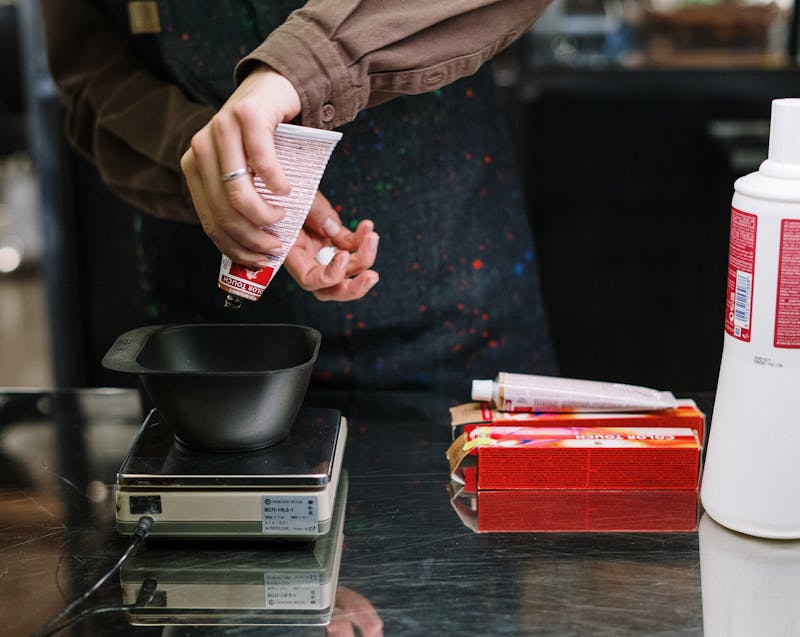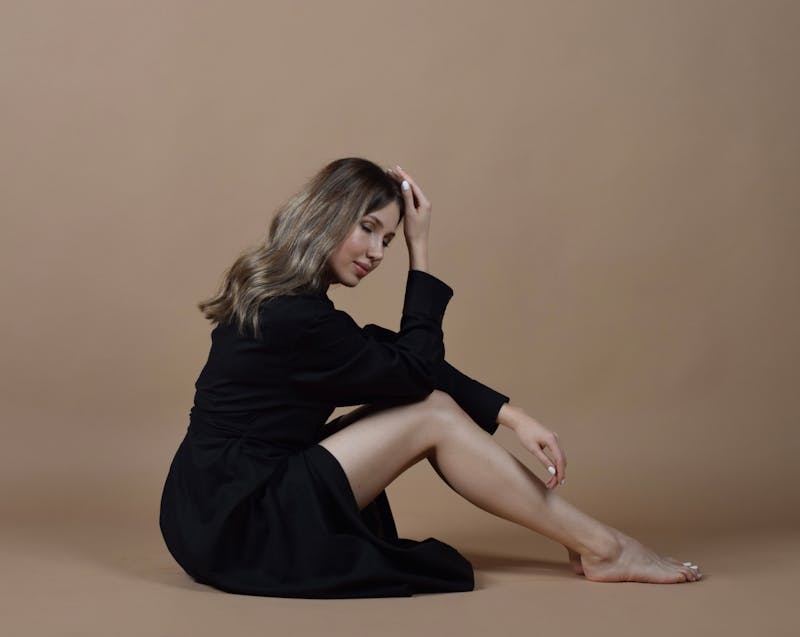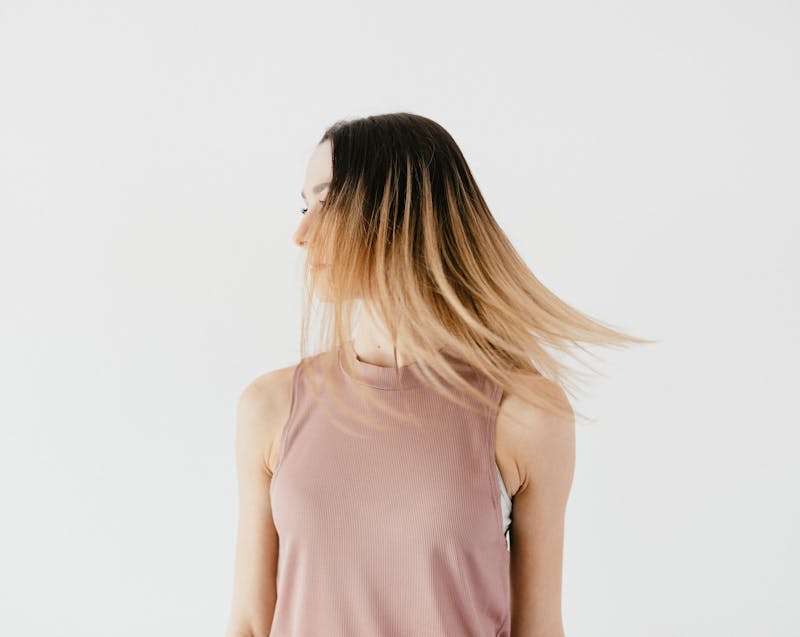Disclaimer: Charms Ville. This site provides fashion and lifestyle content for informational purposes only.
- Balayage is a freehand coloring technique designed to mimic the way sunlight naturally brightens hair.
- The science of balayage relies on understanding melanin, undertones, and light reflection to create depth and dimension.
- Professional stylists use specialized tools, precise sectioning, and blending methods such as feathering and shadow roots for seamless results.
- Customization is key—balayage can be adapted for all hair colors, textures, and skin tones.
- Toners and glosses are essential for neutralizing brassiness and enhancing shine.
- Proper aftercare with color-safe products and periodic gloss refreshes helps maintain the natural look.
- Choosing a salon for natural-looking balayage ensures expertise in avoiding common mistakes and using the latest techniques.
Balayage has become more than just a hair-coloring trend—it’s an art form that blends science, technique, and creativity to achieve the most natural finish possible. Unlike traditional highlights or dramatic ombré styles, balayage is designed to mimic the way the sun naturally lightens hair. For those looking for results that feel effortlessly chic and timeless, booking an appointment at a salon for natural-looking balayage has become the ultimate go-to choice.
This article explores what makes balayage unique, the science behind its appeal, the techniques stylists use, and how clients can preserve their look long after leaving the chair.
What Makes Balayage Unique?
Balayage, a French term meaning “to sweep” or “to paint,” refers to the freehand technique of applying lightener to hair in soft, sweeping motions. Unlike traditional foil highlights, balayage does not rely on rigid sectioning or uniform placement. Instead, it focuses on creating dimension and depth that replicate the way natural sunlight brightens strands over time.
Key distinctions include:
- Softness of transition: Balayage avoids the stark contrasts often seen with foil highlights, blending color seamlessly from root to tip.
- Customization: Stylists tailor the placement and color tones to match each client’s face shape, hair type, and personal style.
- Low-maintenance beauty: Unlike single-process coloring, balayage grows out gracefully, allowing longer stretches between touch-ups.
By choosing salons that specialize in natural-looking balayage, clients gain access to stylists who understand the nuances of freehand painting and how to adapt the technique for different hair types.
The Science of Hair Color and Light Reflection

To understand why balayage looks so natural, it helps to know the science behind hair color and light reflection.
- Melanin and undertones: Natural hair color is determined by varying levels of eumelanin (dark pigment) and pheomelanin (red/yellow pigment). A skilled stylist considers these pigments when selecting lighteners and toners.
- Light reflection: When light hits the hair, different tones reflect back depending on the angle, texture, and placement of color. Balayage enhances this effect by strategically placing highlights where light would naturally fall.
- Depth and dimension: Creating a balance between darker lowlights and brighter highlights ensures hair looks three-dimensional rather than flat or artificial.
The result is hair that catches the light in all the right places—appearing sun-kissed rather than salon-processed.
Tools and Products Stylists Rely On
Achieving a flawless balayage requires precision tools and high-quality products. Professionals at a salon for natural balayage often use specialized brushes, paddles, and foils (sometimes for specific effects). Each tool plays a role in controlling the placement of lightener and ensuring seamless blending.
Key tools include:
- Wide brushes: For painting broad sections and creating diffused color transitions.
- Balayage paddles: Provide a sturdy surface that helps stylists control saturation.
- Detailing brushes: Allow precision in framing the face or painting baby hairs.
Product considerations also matter:
- Gentle lighteners: Formulated with bond-protecting ingredients to minimize damage.
- Toners and glosses: Neutralize brassiness and enhance shine.
- Bond builders: Reinforce hair structure during the lightening process.
By combining the right tools and products, stylists create results that look luminous yet natural.
Techniques That Create Natural-Looking Results
The artistry of balayage lies in the stylist’s technique. While the term “freehand” might sound casual, achieving natural results is anything but random. Stylists in salons for natural balayage follow precise steps to ensure balance, harmony, and flow.
Sectioning and Mapping the Hair
- Stylists analyze the client’s face shape, natural hair movement, and growth patterns.
- They determine where light should hit—around the hairline, crown, or ends.
- Sectioning helps maintain even distribution without creating harsh patches.
The Freehand Painting Method
- Lightener is swept onto the surface of the hair rather than saturated through the section.
- This allows roots to remain soft and untouched, avoiding harsh regrowth lines.
Feathering at the Root
- Feathering involves applying lightener in a soft, upward stroke at the root.
- This technique blurs the transition between natural hair color and the highlight.
Surface vs. Saturation Painting
- Surface painting: Lightener is applied only on the outer layer of the section for a subtle effect.
- Saturation painting: The product fully penetrates the section for bolder, brighter results.
Blending with a Paddle or Brush Flicking
- Gentle brush flicks or the use of a paddle for smooth transitions.
- This prevents color blocks and keeps the result organic.
Shadow Root Technique
- A darker shade is applied near the roots, blending into lighter tones at the mid-lengths and ends.
- Creates depth, longevity, and a more “lived-in” feel.
These methods collectively create hair that appears to have been kissed by the sun, not by a dye bowl.
Customization: Balayage for Different Hair Types and Colors
One of the strengths of balayage is its versatility. A salon for natural balayage tailors every detail to suit the client’s hair color, texture, and style goals.
By Hair Color
- Brunettes: Caramel, chestnut, or honey highlights add warmth and dimension.
- Blondes: Cooler, icy tones or golden highlights enhance brightness.
- Redheads: Copper and strawberry accents create richness without overpowering the base.
By Hair Texture
- Straight hair: Requires precise placement to avoid looking streaky.
- Wavy hair: Natural bends diffuse color, creating a beachy effect.
- Curly hair: Strategically placed highlights define curl patterns and enhance movement.
By Skin Tone
- Warm skin tones often pair well with golden or caramel balayage.
- Cool skin tones look best with ash or beige highlights.
- Neutral skin tones can carry both warm and cool shades with ease.
The ability to personalize balayage makes it universally flattering.
The Role of Toners and Glosses

Even the most skillfully applied balayage can look unfinished without proper toning. Toners and glosses play a critical role in achieving natural results:
- Neutralizing unwanted tones: Toners cancel out brassiness or excessive warmth.
- Enhancing vibrancy: Gloss treatments amplify shine and make hair look healthier.
- Adding dimension: Different glosses can adjust undertones for a cooler or warmer finish.
Salons that specialize in natural balayage use toners as the final polish, ensuring the look is cohesive and radiant.
Aftercare: Preserving the Natural Look
Balayage may be low-maintenance compared to other coloring methods, but proper care extends its beauty and longevity.
Recommended aftercare includes:
- Sulfate-free shampoos: Protect color from fading.
- Purple or blue shampoos: Keep blondes bright by counteracting brassiness.
- Moisturizing conditioners and masks: Maintain softness and hydration.
- Heat protection sprays: Prevent damage from styling tools.
Refreshes at the salon, such as gloss applications or subtle touch-ups, every 8–12 weeks can revive the natural finish without full reapplication.
Common Mistakes Stylists Avoid
Not every balayage attempt results in a seamless, sun-kissed look. The difference between a mediocre and a natural-looking balayage often lies in avoiding common mistakes:
- Over-saturation: Applying too much lightener creates blocky, unnatural streaks.
- Harsh lines: Poor blending leads to visible demarcation at the roots.
- Ignoring natural fall: Painting without considering hair movement results in uneven highlights.
- Wrong toner choice: Using the wrong shade can clash with the client’s undertones.
Experienced stylists at salons for natural balayage understand these pitfalls and adjust their approach accordingly.
The Future of Balayage: Innovations in Technique and Products
Balayage continues to evolve, with new tools and technologies enhancing results. The future looks promising as salons adopt innovative methods:
- Bond-building lighteners: Reduce damage during processing.
- Advanced toners: Provide longer-lasting, customizable finishes.
- Digital consultations and color mapping: Help clients visualize results before committing.
- Eco-friendly formulas: Meet the demand for sustainable beauty practices.
These innovations ensure balayage remains at the forefront of modern hairstyling.
Conclusion
Balayage is more than a coloring trend—it’s a blend of science, artistry, and technique. By understanding hair structure, light reflection, and the nuances of application, stylists create results that look soft, radiant, and completely natural. Visiting a salon for natural-looking balayage ensures access to professionals who can customize every detail, from sectioning and blending to toning and aftercare.
For those who crave hair that feels timeless yet modern, balayage remains the gold standard. With its versatility, low maintenance, and ability to mimic nature itself, it continues to be a defining style in the fashion and lifestyle world.



